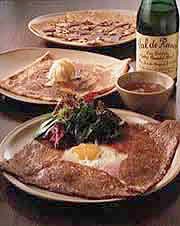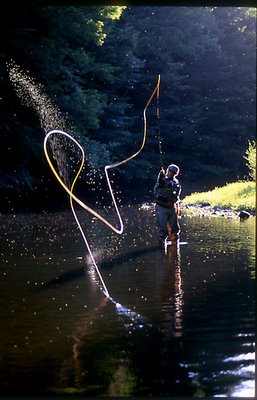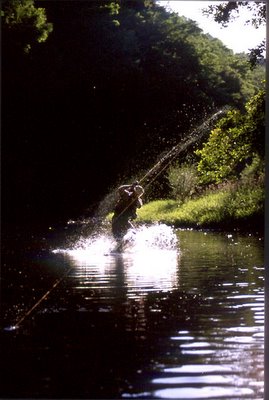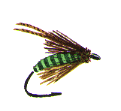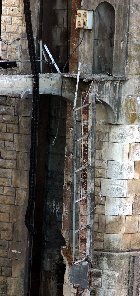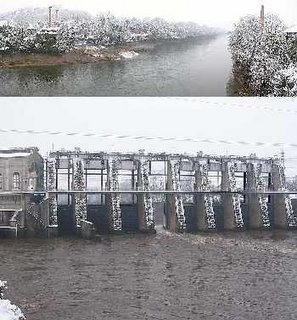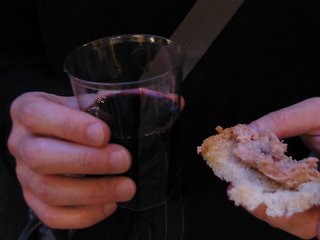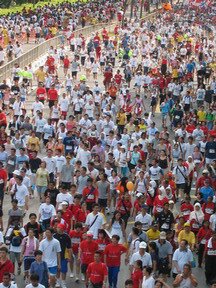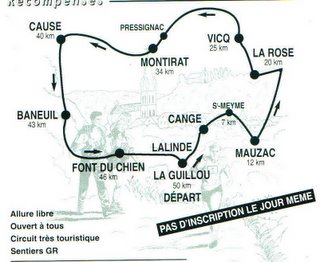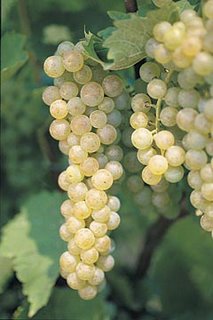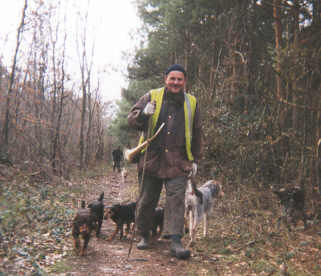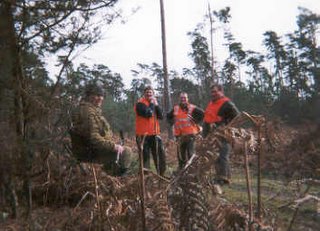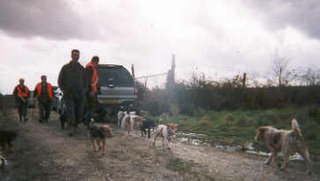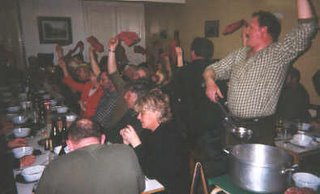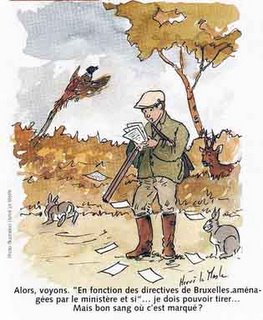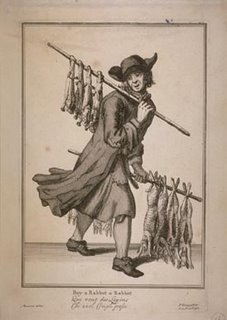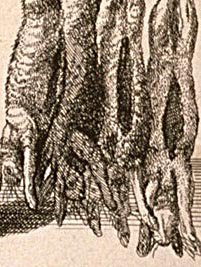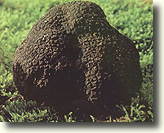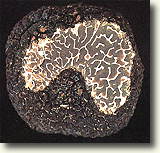Twenty minutes from Lalinde is the picturesque little village of St Alvère, the main centre of all things truffle! The Sainte Ste-Alvère region, historical domain of the Lostanges, is on the South Western edge of the Périgord Noir. A hilly area, whose limestone slopes are the natural home of the truffle.
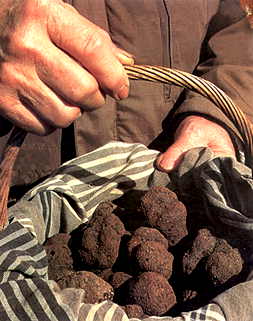
Towards the end of the 60's, many abandoned farms were bought by people from outside the area. They considered growing truffles, particularly as scientific progress had brought into being a new generation of truffle host plants, enabling more rapid production. Once their efficiency had been proven many more farmers took up truffle-growing. In 1987, a little while after the renovation of Ste Alvère market a truffle market was opened, through the initiative of the mayor, Mr Philippe Ducène, and several producers seeking new business openings. Now producers come from all over the Dordogne and neighbouring departments, attracted by favourable trading conditions, resulting from unprecedented efforts in obtaining quality and good presentation.
To keep up with the needs of the market and to promote its aims the Ste Alvère Town Council decided to use new technologies and put the Truffle Market on Internet, using the first real "truffle server" in France.
What is a truffle ? The truffle is a fungus hypogée (growing underground). It forms in Spring between April and June. When it is born it has the form of a tiny cup ( stade apothécioïde ), of which the edges will close up and form the Tuber. The interior of the Tuber will grow veines stériles then veines fertiles. This whole autonomous ensemble is the gleba (body) of the truffle, coloured white, and covered with a skin ornamented with small warts or scales which, as well as protecting the tuber, contributes to its respiration and nutrition.

After a period of inactivity, the hot periods in July ( thermal stress ) and the storms in August ( or irrigation ), will set off the growing cycle. If the amount of water and heat are optimal, the nearly finished size will be attained at the beginning of September . Inside the gleba, the number of of asques ( sacks containing the spores ) will increase. First hyalines (nearly transparent the spores, which represent the seed of the fungus, will little by little brown during the melanisation process, which will end by the acquisition of aroma and the maturity of the fungae.
If the truffles are not harvested, they will degrade and rot, setting free asques which, under various influences will set free (or not) the spores. The biological will continue with the germination of a certain number of spores, liberating of'hyphes ( primary mycélium ) likely to infect the rootlets of the symbiote ( truffle host tree ) by giving birth to new mycorrhizes.
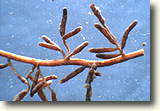
The
mycorrhizes are the organs of symbiose (symbiosis) between the tree and the fungae. The link between the fungus and the roots is established from a a inter-cellular network called the Hartig network. The mycorrhizes emit colonising hyphes which pass the infection on to to other root apices and, replacing the absorbing hairs, will explore the soil, looking for mineral elements.
It is at the level of the mycorrhizes that the nutritional exchanges of the symbiosis take place. The tree gives sugar to the truffle (carbon hydrates) resulting from photosynthesis, while the fungus provides mineral salts (phosphorus) for the tree. It helps the tree to support high calcium levels and better manage its water supplies. If the hyphes stay outside the cortical cells of the root they are ectomycorhizes the case of the truffle Inside they are endomycorhyzes.
These symbiotic organs are called mycorrhizes. As soon as they are formed they emit colonising hyphes which transmit the infection to other apex roots; which propagate by the root cortex.
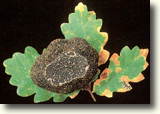
The fruiting is preceded by the phenomenon of "brûlé", due among other things to a phytotoxic process which inhibits the germination of certain seeds.
The fructification begins by the modification of the arrangement of the mycéliens filaments which will gather together in a special structure with a cellular appearance.
Several possibilities may be at the origin of the fructification from endogenic or exogenic causes: the degree of mycorrhizian colonisation( glomérules stages), accumulation of nutritional reserves sexual processes between mycéliums, stress. The suddenness, brutality and force of certain stresses can often be beneficial at certain stages of its biological cycle it is possible to say that truffle is
the daughter of change. The ecology of the truffle : The life and death of the roots in the soil take part in its permanent transformation. The living roots enter the cycle of organic matter and help improve the fertility of of the environment necessary for the development of the fungus. The mésofauna will do its indispensible work of chopping up, digestion, aeration and nutrition where the mélanosporum will prosper.
Trees for truffles :Among the known symbiotes of the truffle, oaks, holm oaks, hornbeam, hazelnut trees and colurna, the others being more exotic, it cannot be said that there are better or worse trees. The importance is to choose one that is adapted and recognised for its performance in a given soil and climate. We cannot enlarge on this vast subject in this summary. The bibliography which we suggest will help to master the question.
 Click on Link: The St Alvère Truffle Market: Buy Online
Click on Link: The St Alvère Truffle Market: Buy Online
Chateau Lalinde : The perfect venue for your eventTAGS: Truffles Events in a chateau Rent a chateau France Special EventsChateau Lalinde Perigord DordogneHolidays in France
